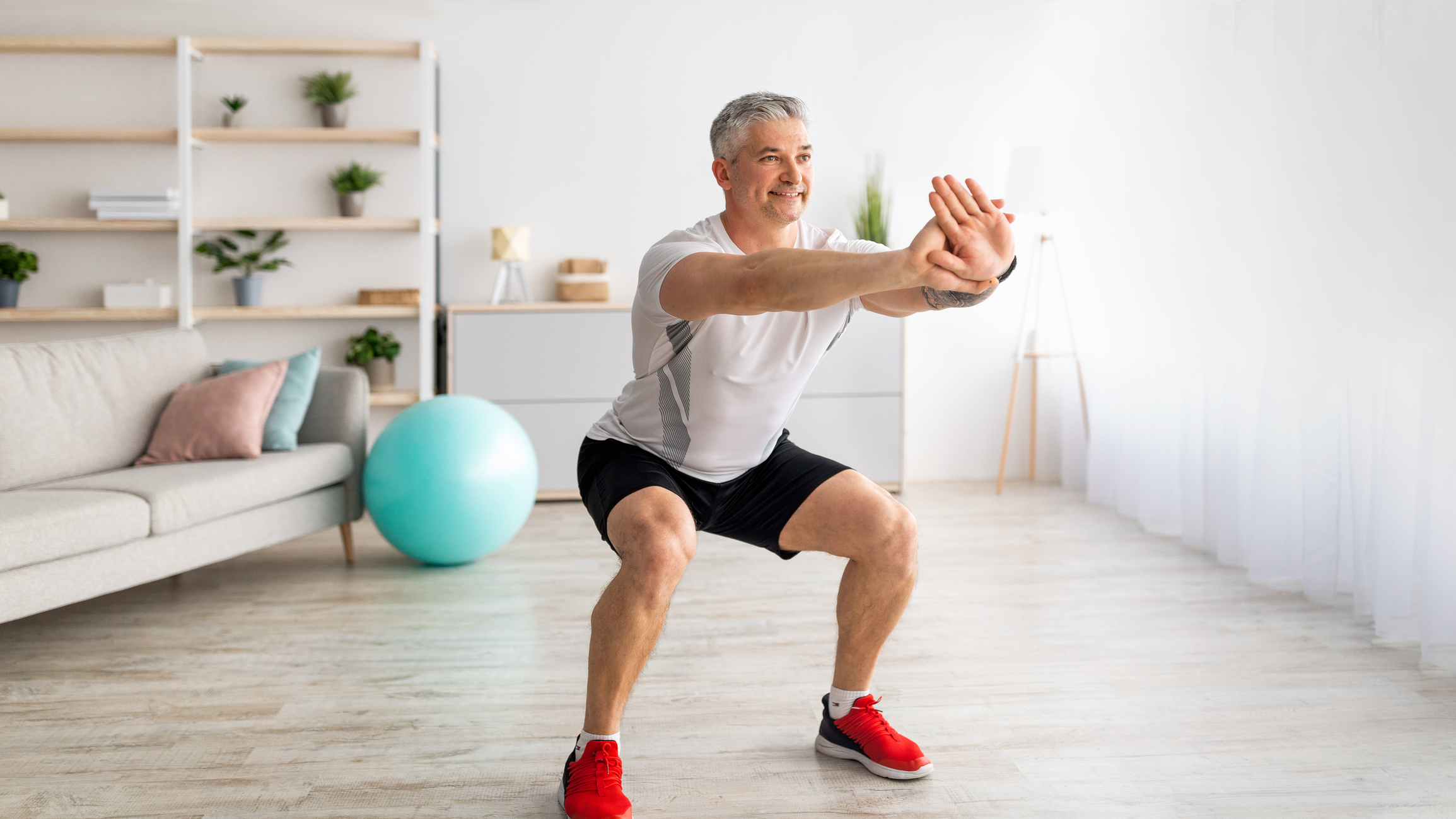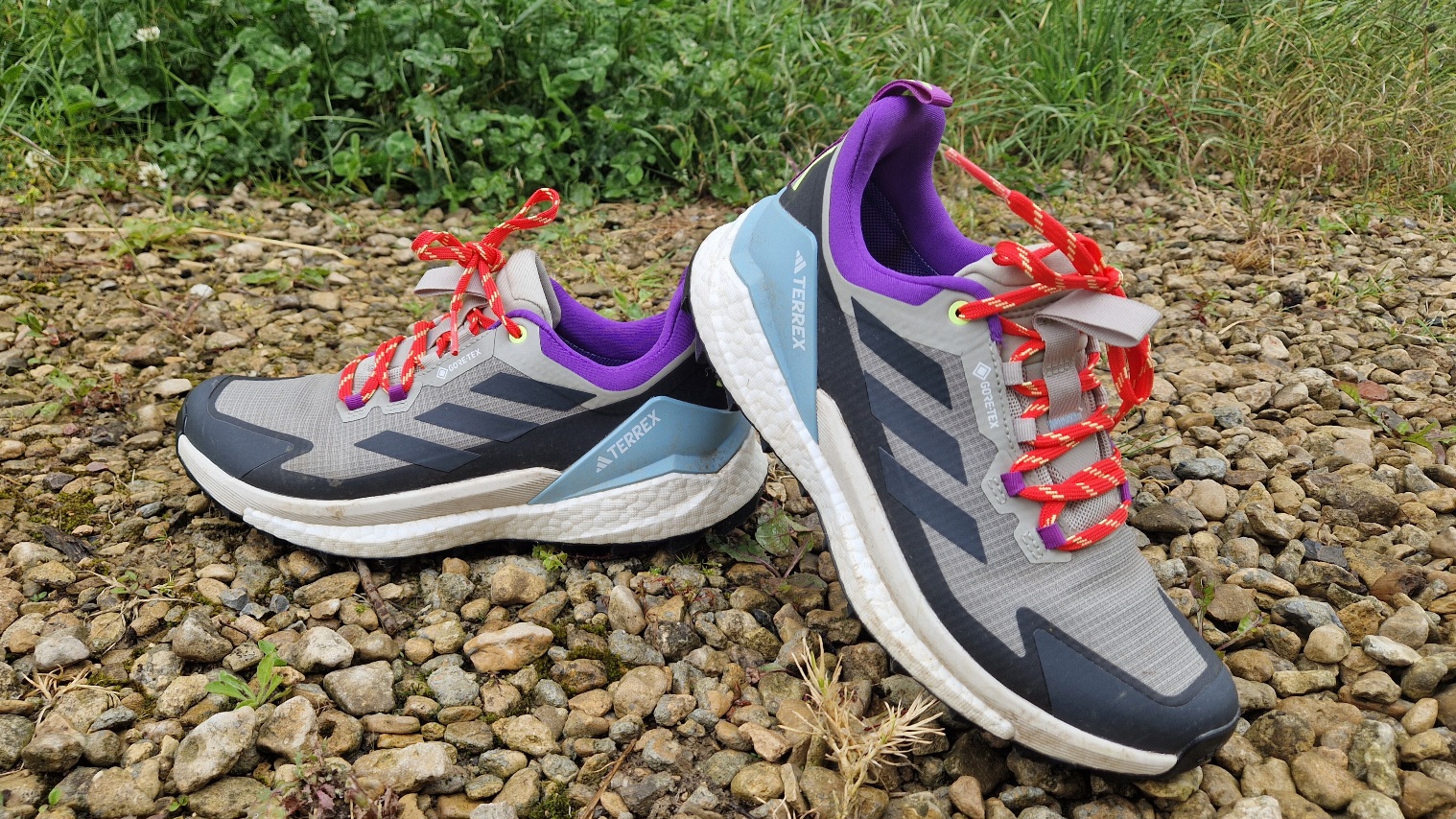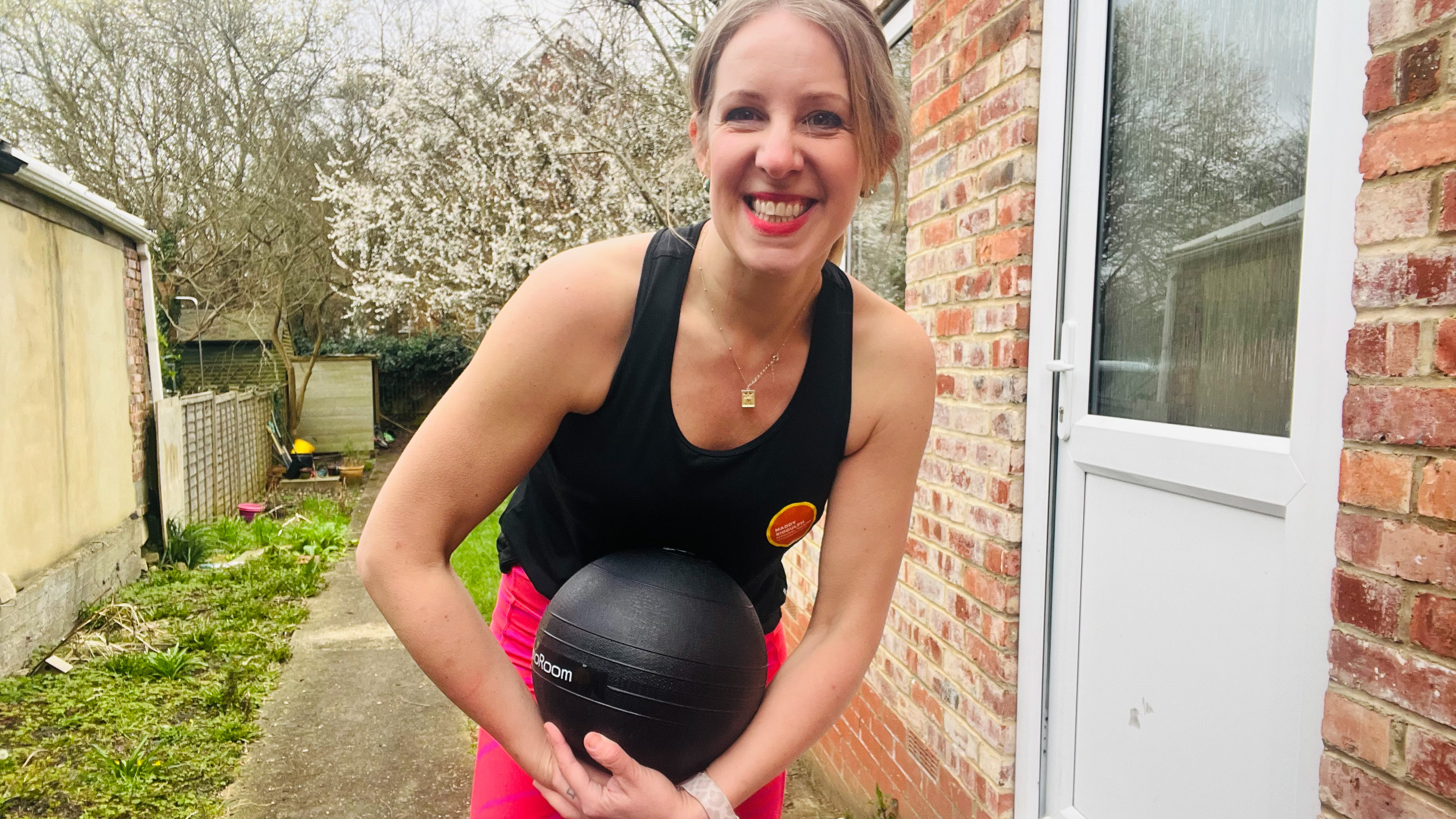Strengthen your joints and reduce your risk of injury with these six expert-approved exercises
These movements will help you build strength in your knees, hips, shoulders and more


If you're experiencing joint pain, your first impulse might be to avoid exercise altogether. But performing joint strengthening exercises can actually help, rather than hinder, your recovery.
"When you exercise, you’re building strength in your muscles, ligaments and tendons around your joint, which helps build support," explains Abby O'Rourke, clinical fitness regional lead at healthcare charity Nuffield Health.
The charity has selected the following six exercises as the best for building joint strength. Each of the moves—demonstrated below—can be tweaked to be easier or harder. Most of them can be performed either equipment-free or with a simple resistance band.
For the final move, you might want a bosu ball or balance board, which can be picked up for roughly $15 from Amazon, but there's also a no-equipment alternative included.

Abby O'Rourke works at Nuffield Health as the clinical fitness regional lead for the north of the UK, supporting rehab specialists within the region. She also delivers the charity's joint pain program, helping others progress their fitness levels, reducing their joint pain which improves their overall quality of life. In addition to these roles, O'Rourke also teaches Les Mills Core, BodyBalance and BodyAttack fitness classes.
How to do Nuffield Health's joint pain prevention workout
- Squat
- Seated row
- Leg extension
- Shoulder press
- Step up
- Stability challenge
"I would suggest performing each move for between 30 seconds and one minute, then resting for 15-30 seconds," O'Rourke advises. She suggests repeating the routine two to three times every week and doing it alongside an aerobic activity like walking.
"And remember, as the UK chief medical officer's guidance says, 'some is good, more is better'."
The exercises
1. Squat
How to do it:
Get the Fit&Well Newsletter
Start your week with achievable workout ideas, health tips and wellbeing advice in your inbox.
- Stand with your feet roughly shoulder-width apart and your toes pointed outwards slightly.
- Push your hips back then bend your knees to lower them like you're sitting into a chair. As you do this, keep your chest up and your back flat.
- Lower yourself until your thighs are parallel with the ground, then drive through your feet to return to the standing position. If this feels too difficult, sit back onto a box or chair.
- For more of a challenge, hold a weight plate, dumbbell or kettlebell in front of your chest while doing the move.
2. Seated row
- Loop a resistance band around a sturdy upright structure like a squat rack or banister, then hold one end of the band in each hand. Sit opposite the point where the band is anchored, far enough away that the band is taut.
- Squeeze your shoulder blades together (the Nuffield Health team suggests imagining you're "trying to crack a nut with them). This is called retracting your shoulder blades
- Keeping your upper arms tucked into your sides, pull the band to your lower ribcage with both hands, then control it back to the starting position.
- For an easier alternative, practice retracting your shoulder blades. For more of a challenge, try this move while standing up.
3. Leg extension
- Tie a resistance band around the front right leg of a chair. Sit down and loop the other end of the band around your right ankle.
- Place your hands on the seat of the chair for support, then straighten your right leg as far as your knee will allow. The band should be short enough that there is added tension on your leg throughout most of the movement. Repeat on the other leg.
- To make this move easier, do it without the band. For more of a challenge, try supported lunges using a suspension trainer like a TRX Machine.
4. Shoulder press
- Sit on a bench or chair and wrap your resistance band underneath the seat. Hold one end of the band in either hand and bring them up to either side of your chest.
- Brace your core then, with your chest proud and back straight, push your hands overhead until they lightly touch.
- Control the bands back to your chest then repeat.
- For a less demanding alternative, perform shoulder blade abductions against a wall (think vertical snow angel with straight arms). To make this move more difficult, swap the band for a dumbbell in each hand.
5. Step up
- For this exercise, you'll need a a sturdy raised surface like a step. Stand adjacent to the step and place your closest foot onto it.
- Drive through the foot on the step to lift your other leg, raising your knee to a right angle.
- Hold this top position for a second, then lower your foot back down to the ground. Repeat on the other side.
- For an easier alternative, perform toe taps, standing on a flat surface and tapping the toe of one foot on the floor behind you. For more of a challenge, add a toe tap to the bottom of your regular step-ups.
6. Stability challenge
- Stand on a bosu ball or balance board. Focus your eyes on a static object in front of you, then try to maintain your balance.
- If you're struggling or don't have a bosu ball/balance board, practice standing on one leg (alternating legs at regular intervals). For an extra challenge, have someone play catch with you as you try to keep your balance on the bosu ball/balance board.
Benefits of this routine
We already know that certain exercises can strengthen the muscles, tissues, ligaments and tendons surrounding our joints. But what are the real-world impacts of this routine?
"This is an example of some of the exercises you can do to improve your strength, mobility, cardio and stability, all of which will provide plenty of benefits for your joints and overall health," O'Rourke explains.
"The benefits are that your joints will last longer and help you continue doing your daily activities with a potential reduction in pain. This can help to prevent injury going forward.
"Increasing strength in your muscles also encourages improvements in bone density, which is really important as you age. This decreases the risk of falls and improves the outcome if you do."
Which exercises are good for joint health?
The exercises above are only some of the ways you can combat joint pain.
Below, O'Rourke walks you through some of the other types of exercise that can be helpful in the hunt for a healthier, more mobile body.
1. Strength training
"If we have stronger muscles, ligaments and tendons, this builds support for your joints. You can do this kind of exercise in the gym, performing a variety of upper-body, lower-body and core exercises, or taking part in classes."
2. Cardio
"When we improve our cardiovascular health, we help reduce the overall inflammation that contributes to our joint pain.
"Classes that involve cardio training include aqua-aerobics, dance and indoor cycle, but you can do anything you enjoy that raises your heart rate. The most important thing here is to move more."
3. Mobility
"If you’re able to move more freely in your joints, this will help reduces any stiffness building up. Yoga classes are great for improving your mobility, which gives you a greater range of motion when performing exercises."
4. Stability
"Having more stability and balanced muscles allows you to move your body evenly. It also means your body can move with more control, reducing the chance of injury.
"Yoga, dance and Les Mills BodyBalance classes can be good for this. You could also challenge yourself in the gym or at home by doing things like standing on one leg."
Who can benefit from this routine?
O'Rourke says people with a range of conditions, including osteoarthritis, rheumatoid arthritis, bursitis and many other degenerative conditions, have benefited from Nuffield Health's Joint Pain Programme
"Many of our participants experience great outcomes through taking part in physical activity with a group of like-minded participants in a fun environment with a specialised instructor," she explains.
This is because exercise has been shown to support joint health by building and maintaining strength in the supportive tissues around your joints, as well as increasing endorphins which can reduce your sensitivity to pain over time, O'Rourke adds.

Harry Bullmore is a Fitness Writer for Fit&Well and its sister site Coach, covering accessible home workouts, strength training session, and yoga routines. He joined the team from Hearst, where he reviewed products for Men's Health, Women's Health, and Runner's World. He is passionate about the physical and mental benefits of exercise, and splits his time between weightlifting, CrossFit, and gymnastics, which he does to build strength, boost his wellbeing, and have fun.
Harry is a NCTJ-qualified journalist, and has written for Vice, Learning Disability Today, and The Argus, where he was a crime, politics, and sports reporter for several UK regional and national newspapers.
-
 This might be your last chance to get my favourite waterproof walking shoe, and it's 25% off
This might be your last chance to get my favourite waterproof walking shoe, and it's 25% offDeal These Adidas Gore-Tex shoes are the most watertight I've tested
By Lou Mudge
-
 I tried wall balls for 30 days and the results surprised me
I tried wall balls for 30 days and the results surprised meTry this fitness challenge to boost total body strength
By Maddy Biddulph